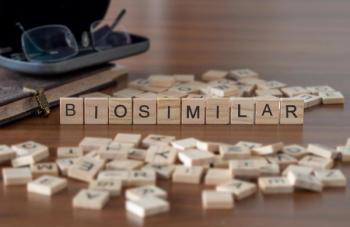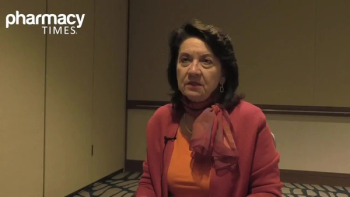
Golimumab Reduces Symptom Severity in Patients with Psoriatic Arthritis
Patients who received golimumab and methotrexate reported larger improvements than monotherapy patients.
An analysis of patient records indicates that adding methotrexate to golimumab may increase the latter’s ability to treat the symptoms of psoriatic arthritis. This finding from real-world patients echoes the conclusion of several clinical trials.
Researchers from Canada used the Biologic Treatment Registry Across Canada (BioTRAC) database to compare outcomes for 57 patients who received golimumab monotherapy and 95 patients who received a combination of golimumab and methotrexate. Patients from both groups reported improvements on 8 separate measures of disease severity after they had undergone 6 months of treatment, and they maintained those gains for the full 12 months of study follow up.
Patients who received golimumab and methotrexate reported larger improvements than monotherapy patients in all but 1 measure of disease activity, but the difference only rose to the level of significance for 1 measure: total number of tender joints. Median tender-joint totals for combination therapy patients fell from 6.93 at baseline to 1.16 after 12 months while median totals for monotherapy patients fell from 6.88 to 3.43 (p for superiority 0.013).
Median totals for swollen joints fell from 4.71 to 0.51 among combination therapy patients and from 5.21 to 1.73 among monotherapy patients (p=0.123). Median totals on a pain index fell from 50.47 to 26.37 among combination therapy patients and from 47.26 to 26.05 among monotherapy users (p= 0.819).
Median PtGA (Patient Global Assessment) scores fell from 50.68 to 26.44 among combination therapy patients and from 46.88 to 24.24 among monotherapy patients (p=0.731). Median MDGA (Physician Global Assessment) scores fell from 4.78 to 1.36 among combination therapy users and from 5.08 to 2.39 among monotherapy users (p=0.112).
Median DAS28 (Disease Activity Score 28) scores fell from 4.15 to 2.30 among combination therapy patients and from 4.07 to 2.91 among monotherapy patients (p=0.106). Median HAQ-DI (Health Assessment Questionnaire Disability Index) scores fell from 1.03 to 0.67 among combination therapy patients and from 0.96 to 0.76 among monotherapy patients (p=0.726).
The 1 measure that saw monotherapy outperform combination therapy (though not significantly) was the PASI (Psoriasis Area and Severity Index). By that measure, median scores fell from 2.09 to 0.74 among combination therapy users and from 2.66 to 0.45 among monotherapy users (p for monotherapy superiority 0.331).
“The results of this analysis have shown that treatment with golimumab, with or without methotrexate, is effective in reducing symptom severity and improving disease outcomes over a 12-month period in psoriatic arthritis patients,” wrote the study authors, who presented their findings at the annual meeting of the American College of Rheumatology and Association of Rheumatology Health Professionals. “However, concomitant treatment with methotrexate may confer additional benefits. Additional analyses with larger sample sizes are required.”
Several clinical trials that have been published to date have found that concurrent methotrexate may increase the efficacy of anti-tumor necrosis factor treatments, the authors of the new study wrote, but little previous research had looked to see whether combination therapy led to improved results in real-world practice.
The study authors noted several limitations to their work, including its retrospective nature, but cited the relatively small number of patients as the largest obstacle to determining whether the apparent benefits of methotrexate were significant.
Newsletter
Stay informed on drug updates, treatment guidelines, and pharmacy practice trends—subscribe to Pharmacy Times for weekly clinical insights.


















































































































































































































